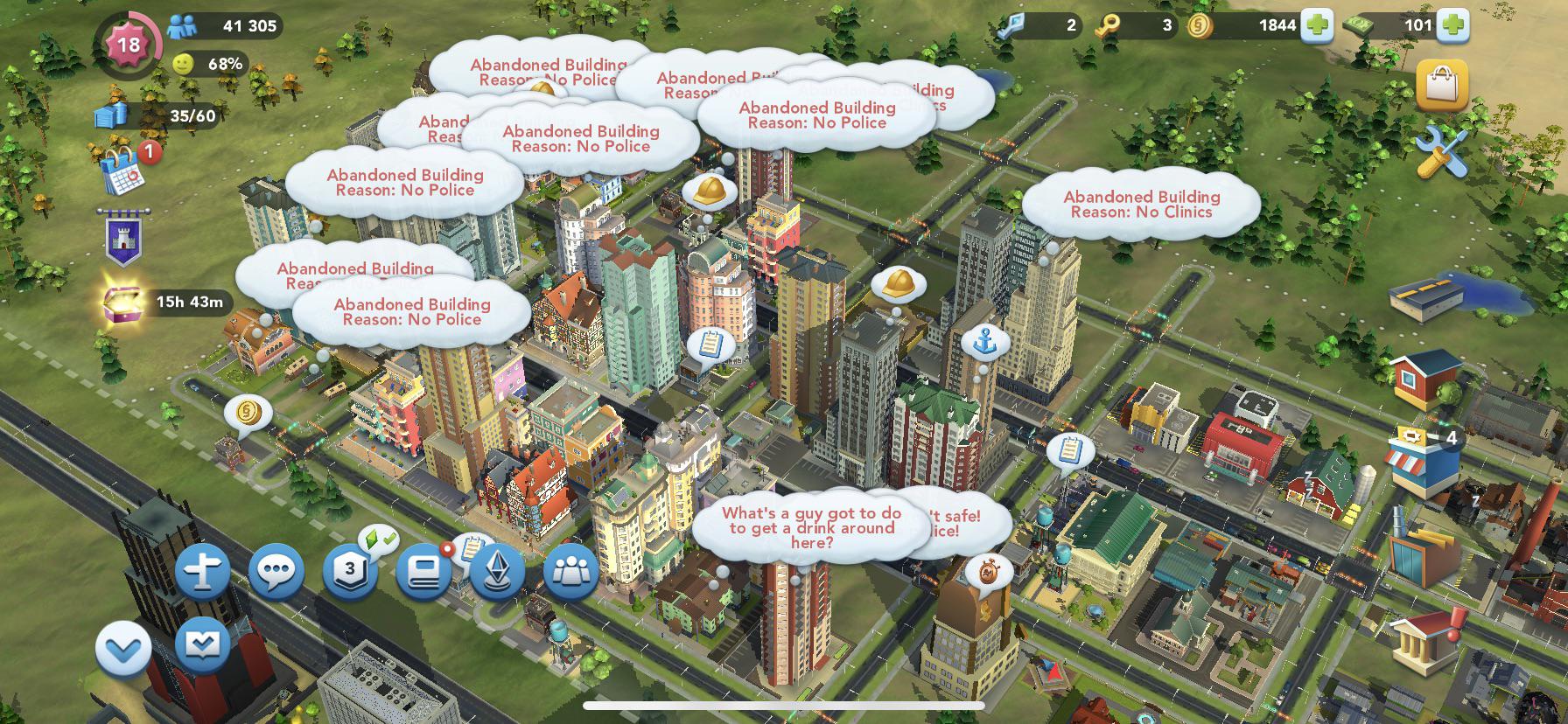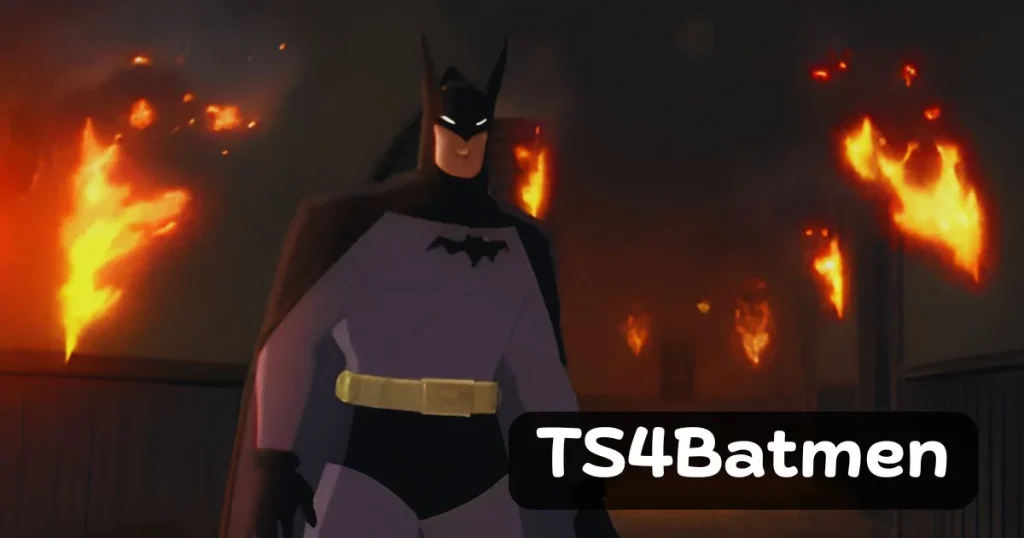Game
Unraveling the Mysteries of the Chancerne

Nestled in the heart of the mystical landscapes lies a phenomenon that has intrigued scientists, researchers, and enthusiasts alike – the Chancerne. This enigmatic occurrence has long been shrouded in mystery, sparking curiosity and speculation about its origins and the forces that govern its existence. In this article, we embark on a journey to unravel the mysteries of the Chancerne, exploring its characteristics, potential explanations, and the implications it holds for our understanding of the natural world. Ever wonder what really goes on in the ancient fortress of the Chancerne? You’ve probably passed by the crumbling stone walls and towers on your way into the city, gazing up at the imposing structure with a mix of curiosity and apprehension. The Chancerne has stood for over a thousand years, shrouded in mystery and rumor. What dark secrets are hidden within those walls? As an intrepid explorer, you can’t help but be drawn to unraveling its mysteries. So you embark on a quest to infiltrate the Chancerne, dodging the guards under cover of night, scaling walls and descending into the depths of the keep. What will you discover in this place lost to time? Adventure awaits you inside these hallowed halls if you’re brave enough to venture within. The secrets of the Chancerne are calling – do you dare answer?
Defining the Chancerne:
The Chancerne is a term used to describe a peculiar and rare natural phenomenon characterized by unexplained patterns or anomalies in various elements of the environment. These anomalies often defy conventional scientific explanations, leaving observers astounded and prompting a quest for understanding. From unexplained light patterns in the sky to bizarre geological formations, the Chancerne encompasses a wide range of mysterious occurrences that challenge our understanding of the world around us.
Historical Perspectives:
Historically, cultures around the world have incorporated tales of strange happenings into their folklore and mythology. Many ancient civilizations attributed such phenomena to the whims of gods or other supernatural forces. As our scientific understanding has advanced, some of these occurrences have found rational explanations, but the Chancerne remains a challenge to modern science.
Examples of Chancerne Phenomena:
- Sky Phenomena: Reports of inexplicable lights, formations, and movements in the sky have been linked to the Chancerne. Witnesses describe unusual patterns of colored lights, formations resembling celestial objects, and movements that defy the laws of physics.
- Geological Anomalies: Certain geological formations have also been associated with the Chancerne. Unexplained rock formations, patterns in soil composition, and geological structures that lack a clear scientific explanation contribute to the mystique surrounding this phenomenon.
- Biological Oddities: In some cases, the Chancerne extends its influence to the realm of biology. Reports of bizarre plant growth patterns, unexplained animal behavior, and anomalous genetic mutations have been linked to this mysterious phenomenon.
Scientific Investigations:
Scientists and researchers have grappled with the challenge of understanding the Chancerne, employing various disciplines to investigate its nature. Geologists, astronomers, biologists, and physicists collaborate to analyze data, conduct experiments, and develop theories that might shed light on the mysteries surrounding the Chancerne. Despite their efforts, many questions remain unanswered.
Theories and Speculations:
Several theories have been proposed to explain the Chancerne, ranging from the influence of extraterrestrial forces to the existence of undiscovered natural phenomena. Some suggest that quantum physics may hold the key to understanding these anomalies, while others explore the possibility of a deeper connection between Earth’s ecosystems and the cosmos.
What Is the Chancerne?
The Chancerne is an enigmatic astronomical phenomenon that has puzzled scientists for decades. Essentially, it refers to a series of unexplained radio signals detected from a region in the constellation Canes Venatici. These strange signals are bursts of radio waves that last only a few milliseconds. They seem to flare up and then disappear without a trace.
First detected in the 1970s, the Chancerne has been the subject of much speculation. Some believe the signals could be coming from an alien civilization, while others theorize they may have a natural astrophysical origin. The truth is, we simply don’t know for sure what’s causing these bizarre bursts. All we know is that they originate from a small region of sky, implying a common source.
The Chancerne remains shrouded in mystery. Scientists have aimed various radio telescopes at the source of the signals, hoping to detect a pattern that might reveal their origin. However, the bursts appear completely random and unpredictable. The Chancerne continues to taunt us, posing as many questions as answers about this peculiar phenomenon on the fringes of our galaxy and testing the limits of human knowledge and understanding.
Perhaps one day we will unravel the enigma of the Chancerne. For now, all we can do is listen in awe and wonder as these fleeting signals arrive from the depths of space, reminding us how little we truly comprehend about the universe and our place within it. The Chancerne is a humbling reminder of the vastness of the unknown.
The History and Origins of the Chancerne
The chancerne has origins shrouded in mystery. While its name comes from Old French, referring to its yellow color, little is known about how it first appeared in medieval times.
Theories About Its Origins
Some historians believe the chancerne was brought to Europe during the Crusades in the 12th and 13th centuries, as knights returned from the Middle East with exotic goods. Others think it was brought back from Asia during the era of Marco Polo’s travels in the late 1200s.
A third theory is that the chancerne originated in the Mediterranean, possibly in North Africa, and was traded locally before spreading into Europe. The warm, coastal climate would have been ideal for cultivating the chancerne.
Whatever its precise origins, the chancerne became popular in royal courts and noble households across Europe in the Middle Ages. Its intense saffron color was highly prized and seen as a symbol of wealth and status. Demand for the luxury item spread, and by the 1500s, the chancerne had become more widely available to merchants and the upper middle class.
Uses and Applications
The chancerne was mainly used as a dye for textiles like silk, wool, and linen. Its vibrant yellow pigment produced a color that was difficult to achieve with other dyes at the time. Garments dyed with chancerne were reserved for the wealthy due to the high cost of the dye. It was also used in paintings as a pigment for achieving yellow hues, especially in illuminated manuscripts.
Over time, cheaper yellow dyes and pigments were introduced, and the chancerne faded into obscurity. Though no longer commercially significant, its place in history as a coveted luxury good in the Middle Ages lives on.
Interesting Facts About the Chancerne
The chancerne is a fascinating but little-known creature. Here are some interesting facts about this peculiar animal:
Diet
The chancerne is an omnivore, feeding on a variety of plants, fruits, nuts, and small invertebrates. Their diet varies based on the season and availability of different food sources. The chan-cerne stores excess fat in its tail to survive periods when food is scarce.
Behavior
Chancerne are solitary and territorial animals. They are most active at night and spend a large portion of the day sleeping in trees. Chan-cerne mark their territory to keep other animals out by rubbing a musk secreted from their tail glands on trees. They are generally shy and avoid contact with humans, though some people have reported spotting chan-cerne in heavily forested areas.
Reproduction
Female chancerne, called chancettes, give birth to litters of 2-4 young, known as chanterlings, once a year. Chanterlings rely on their mothers for the first 6-8 months of life before becoming independent. Chancettes are very protective of their young for the first few months and may attack anything they perceive as a threat.
Habitat
Chancerne inhabit dense, tropical rainforests. They prefer forests with large, mature trees that provide plenty of cover from predators. Chancerne are adept climbers and spend much of their time in the upper canopy of the rainforest, rarely descending to the forest floor. Their sharp claws allow them to grip onto tree branches and climb head first up and down tree trunks with ease.
The chancerne remains an enigma in many ways due to its elusive nature and remote habitat. Continued research is still needed to fully understand the behavior, social dynamics, and population status of this peculiar rainforest dweller.
The Appearance and Behavior of the Chancerne
The Chancerne is a mysterious creature found in deep ocean waters. Little is known about its appearance or behavior due to the immense depths it inhabits, but scientists have pieced together clues from rare sightings and footage.
The Appearance of the Chancerne
The Chancerne is a large, shark-like fish that can reach up to 30 feet in length. Its slender body is covered in bioluminescent photophores that emit a pale blue glow, helping it camouflage in the deep sea twilight zone. Two elongated fins on either side of its body and a distinctive tail fin give it a torpedo-shaped silhouette.
The Chancerne has a protruding lower jaw filled with razor-sharp teeth for grasping prey. Its eyes are disproportionately large, suggesting it relies heavily on vision to hunt in the deep sea where little light penetrates. Very little else is known about its anatomy or physiology due to lack of specimens. The extreme depths it lives at make it challenging to study.
The Behavior of the Chancerne
The Chancerne is a solitary ambush predator. It uses its bioluminescence to hide in plain sight, waiting for unsuspecting prey to swim by before attacking with lightning speed. Its diet likely consists of squid, fish, crustaceans and anything else it can grasp in its strong jaws.
Little else is known about the Chan-cerne’s behavior. Scientists have speculated it may migrate to shallower waters during certain times of the year to feed or mate, but there is no conclusive evidence to support these theories. Until we have the technology to explore more of the ocean depths, much of this deep sea denizen’s life will remain shrouded in mystery.
Unraveling the secrets of creatures like the Chan-cerne gives us a glimpse into the alien world far beneath the ocean surface. Though enigmatic, its discovery highlights how much we still have to learn about life in the deepest parts of our planet. The ocean depths represent one of the last truly unexplored frontiers on Earth.
Spotting a Chancerne in the Wild
Spotting a chancerne in the wild requires a keen eye and patience. These elusive creatures tend to avoid contact with humans, so sightings are rare. However, with some knowledge of their behavior and habitat, you’ll increase your chances of observing one in its natural environment.
Look for signs
As you explore the dense forests and jungles chan-cernes inhabit, watch for clues that one has passed through the area. Things like bent or broken branches at about 1 to 1.5 meters high, impressions and scratches on tree trunks, and tufts of coarse fur caught on undergrowth are all indications a chancerne may be near. Chancernes also leave behind a musky scent, so be on alert for any unusual smells.
Listen for sounds
Chancernes communicate using a variety of vocalizations, including grunts, clicks, squeaks and screeches. Pay close attention for any strange noises coming from the treetops or underbrush. Mating calls and territorial displays tend to be the loudest, so the best times to spot a chancerne are during breeding season in the spring and summer.
Stake out feeding spots
Chan-cernes are omnivores, feeding on plants, small mammals like rodents, birds, eggs, and invertebrates. Look for disturbed areas around termite mounds, rotten logs, berry patches and nut trees. Chan-cernes often return to the same feeding spots, so setting up a hide near one of these locations and waiting patiently may reward you with a sighting, especially at dawn and dusk when they are most active.
With perseverance and a bit of luck, you’ll eventually be rewarded with a glimpse of these fascinating creatures in their natural habitat. Observing a chan-cerne in the wild is a rare privilege that will create memories to last a lifetime. So get out there, be vigilant, and who knows—you may just unravel the mysteries of the chan-cerne!
Conclusion:
The Chan-cerne continues to captivate the human imagination, serving as a reminder that our understanding of the natural world is far from complete. As scientific inquiry advances, and technologies improve, it is hoped that we may one day unravel the mysteries of the Chan-cerne. Until then, this enigmatic phenomenon will persist as a testament to the vast unknowns that still exist in our world, encouraging curiosity, exploration, and a humble acknowledgment of the mysteries that lie beyond our current understanding. So there you have it, some of the enduring enigmas surrounding the ancient Chan-erne ruins. While archeologists and researchers have uncovered many clues, there’s still so much left to unravel about this mysterious civilization. Their advanced architectural feats, sophisticated culture, and sudden disappearance remain perplexing puzzles. The truth is out there, waiting to be discovered by some intrepid explorer. Maybe that explorer is you! If exploring hidden ancient wonders appeals to your sense of adventure, consider planning a trip to see the Chan-cerne ruins in person. Who knows – you might even stumble upon a breakthrough revelation that finally solves one of history’s greatest unsolved mysteries. The secrets of the Chan-cerne are calling – will you answer?
Game
SimpCity: The Ultimate Guide to the Popular Simulation Game

SimpCity has taken the gaming world by storm as a captivating city-building simulation game that challenges players to design, manage, and expand their own virtual metropolis. With its engaging mechanics, charming visuals, and strategic depth, SimpCity offers endless hours of fun for both casual gamers and simulation enthusiasts.
In this article, we’ll explore what SimpCity is, its gameplay mechanics, tips for success, and why it has become such a beloved game.
What is SimpCity?
SimpCity is a city-building simulation game where players take on the role of a mayor tasked with constructing and managing a thriving city. The game combines elements of strategy, resource management, and creativity, allowing players to:
Inspired by classic city-building games like SimCity, SimpCity offers a fresh, modern take with simplified mechanics and a more accessible gameplay experience.
Gameplay Mechanics
1. City Planning & Zoning
Players must strategically place different zones to ensure a balanced and efficient city:
- Residential Zones – Houses your Sims (citizens).
- Commercial Zones – Provides shops and services.
- Industrial Zones – Produces goods and jobs but may increase pollution.
2. Infrastructure & Services
A successful city requires proper infrastructure:
- Roads & Transportation – Keep traffic flowing smoothly.
- Utilities – Provide power, water, and waste management.
- Public Services – Police, fire stations, and hospitals keep citizens safe and happy.
3. Economy & Budget Management
Players must balance income (taxes, businesses) with expenses (construction, maintenance) to avoid bankruptcy.
4. Citizen Happiness & Disasters
Keeping citizens happy involves managing pollution, traffic, and amenities. Random disasters like fires, earthquakes, or alien invasions add excitement and challenge.
Tips for Building a Successful City
- Start Small – Focus on a stable economy before expanding.
- Plan Efficient Layouts – Avoid traffic jams by designing well-connected roads.
- Balance Zones – Too much industry causes pollution; too many shops may lead to unemployment.
- Invest in Public Services – Happy citizens pay more taxes!
- Prepare for Disasters – Keep emergency services ready.
Why is SimpCity So Popular?
- Easy to Learn, Hard to Master – Simple mechanics with deep strategy.
- Creative Freedom – Design unique cities with different themes.
- Regular Updates – New buildings, challenges, and events keep the game fresh.
- Community & Competitions – Players can share cities and compete for the best designs.
Conclusion
SimpCity offers a perfect blend of strategy, creativity, and management, making it a must-play for fans of simulation games. Whether you’re a seasoned city-builder or a newcomer, SimpCity provides endless opportunities to craft your dream metropolis.
Game
Ts4batmen : How a Comic Book Hero Became a Global Icon

In the vast universe of comic book superheroes,Ts4batmen few have managed to transcend their original medium to become global icons quite like Ts4batmen. This character, born from the vibrant imagination of creators and nurtured by dedicated fans, has carved out a unique place in popular culture. Let’s explore how Ts4batmen evolved from a comic book hero into a symbol recognized around the world.
The Origins of Ts4batmen
Ts4batmen was first introduced in the pages of an indie comic book series, aiming to blend traditional superhero tropes with contemporary themes. The character’s name itself is a clever play on words, suggesting both the classic allure of bat-inspired heroes and the digital era’s penchant for abbreviations and branding. The creators intended for Ts4batmen to resonate with a younger audience while still paying homage to the classic archetypes of the genre.
The character’s backstory is rich and complex. Ts4batmen, a vigilante fighting against urban crime and social injustice, embodies the struggles of modern society. His narrative arc includes themes of redemption, resilience, and the quest for justice, making him relatable to a diverse audience. These themes struck a chord with readers and laid the foundation for the character’s enduring popularity.
Rise to Fame
As the comic series gained traction, Ts4batmen’s fanbase began to expand beyond the pages of comic books. Online platforms, social media, and fan art played significant roles in this evolution. Fans shared their interpretations of Ts4batmen, creating a vibrant community that celebrated the character’s ideals. This grassroots support helped the character gain visibility and appeal, eventually catching the attention of larger media outlets.
The transition from comic book pages to other forms of media, including animated series, video games, and merchandise, was pivotal. Each adaptation retained the essence of Ts4batmen while exploring new storytelling avenues, thereby attracting new fans. Merchandise ranging from action figures to apparel allowed fans to express their admiration, further solidifying the character’s status as a cultural phenomenon.
Cultural Impact
Ts4batmen’s impact extends beyond entertainment. The character has become a symbol of hope and resilience, inspiring countless individuals to stand up against adversity. Through various campaigns and initiatives, Ts4batmen has been associated with social causes, including mental health awareness and community empowerment. This connection to real-world issues has endeared the character to fans who appreciate the blend of escapism and social commentary.
Moreover, Ts4batmen’s appeal is amplified by its inclusivity. The character’s narratives often feature a diverse cast of supporting characters, showcasing different backgrounds and experiences. This representation resonates with a global audience, making Ts4batmen a beacon of unity in a fragmented world.
The Future of Ts4batmen
As we look to the future, the potential for Ts4batmen to evolve further is immense. With advancements in technology and storytelling, there are exciting opportunities for interactive experiences that could allow fans to engage with the character in unprecedented ways. Virtual reality, augmented reality, and immersive storytelling could bring Ts4batmen’s adventures to life like never before.
In addition, as the world continues to grapple with complex social issues, Ts4batmen’s role as a champion for justice will likely become even more relevant. The character’s ability to adapt to changing societal dynamics ensures that he will remain a significant figure in popular culture.
Conclusion
From his humble beginnings in indie comic books to his status as a global icon, Ts4batmen exemplifies the power of storytelling and the ability of characters to connect with audiences on multiple levels. His journey reflects not only the evolution of comic book heroes but also the changing landscape of culture and society. As Ts4batmen continues to inspire and entertain, one thing is clear: he is more than just a comic book hero; he is a symbol of hope for generations to come.
FAQS
Q1: What is “Ts4batmen”?
A: “Ts4batmen” is a comprehensive exploration of the journey of the iconic comic book hero, Batman, from his creation in the late 1930s to his status as a global icon today. It examines the cultural impact, adaptations, and enduring popularity of the character.
Q2: Who created Batman?
A: Batman was created by artist Bob Kane and writer Bill Finger, making his first appearance in Detective Comics #27 in 1939.
Q3: What themes does “Ts4batmen” explore?
A: The work delves into themes of justice, morality, and the duality of human nature, reflecting on how these themes resonate with audiences across different cultures and eras.
Q4: How has Batman evolved over the years?
A: Batman has undergone significant transformations in his portrayal, from the campy character of the 1960s TV series to the darker, more complex interpretations seen in graphic novels and films. “Ts4batmen” examines these shifts in context.
Q5: Why is Batman considered a global icon?
A: Batman’s universal themes, compelling narrative, and diverse adaptations—from comics and movies to merchandise and video games—have made him relatable and appealing across different cultures, contributing to his status as a global icon.
Q6: What are some notable adaptations of Batman?
A: Key adaptations include Tim Burton’s and Christopher Nolan’s films, the animated series, and various graphic novels such as “The Dark Knight Returns” and “Batman: Year One.”
Q7: How does “Ts4batmen” address the impact of fandom?
A: The work discusses how fan communities have shaped the character’s narrative, driven demand for new stories, and created a cultural phenomenon around Batman through conventions, cosplay, and online platforms.
Q8: Are there any interviews or insights from creators in “Ts4batmen”?
A: Yes, “Ts4batmen” includes interviews with comic book writers, artists, filmmakers, and scholars who provide valuable insights into the character’s development and impact.
Q9: Who is the target audience for this work?
A: “Ts4batmen” is aimed at both long-time Batman fans and newcomers, as well as scholars interested in pop culture, comic book history, and media studies.
Q10: Where can I find “Ts4batmen”?
A: “Ts4batmen” is available at major bookstores, online retailers, and comic book shops. You can also check local libraries for copies.
Game
Halo (2003) Game Icons Banners: A Detailed Guide
The year 2003 marked a significant moment in gaming history with the release of Halo (2003) Game Icons Banners Alongside its thrilling gameplay and expansive storyline, the game became renowned for its distinct visual elements—specifically, its game icons and banners. These graphics not only represented Halo’s branding but also played a crucial role in building a dedicated fanbase. From in-game visuals to community-driven artwork, the game icons and banners left a lasting impression on gamers worldwide. This article delves deep into the story behind these iconic symbols, their evolution, and how they became integral to Halo’s identity.
The Origins of Halo Icons and Banners
In 2003, “Halo: Combat Evolved” burst onto the gaming scene, quickly becoming a cultural phenomenon. One of the standout features was the use of game icons and banners, which helped to establish a strong brand identity. The early designs of these icons were heavily influenced by the military aesthetics within the game. Strong, bold lines and futuristic elements were key components of the visual design. From the emblem on the Master Chief’s armor to the team insignia in multiplayer modes, these graphics were more than just placeholders—they became symbols of the game’s core themes of warfare and survival.
Evolution of Halo Icons Over Time
As the Halo series progressed, so did the visual representation of its game icons. From Halo 2 to the latest installments, the icons evolved to reflect changes in game design and technological advancements. Early designs were simple but effective, often incorporating geometric shapes that were easy to recognize. With each new title, the icons grew more complex, incorporating 3D elements and dynamic animations. This evolution kept the franchise visually fresh and appealing to both longtime fans and newcomers.
Key Design Elements of Halo Banners
The banners in Halo were equally important. They weren’t just background art; they set the mood for the game’s many stages and missions. The banners often featured detailed landscapes or battle scenes, showcasing the depth and complexity of the Halo universe. Key design elements included dark, brooding skies, high-contrast color schemes, and minimalist typography, all of which worked together to create an immersive gaming experience. These banners became synonymous with the feeling of stepping into an epic sci-fi adventure.
How Icons and Banners Enhance Gameplay
The icons and banners in Halo weren’t merely decorative; they also played a functional role in enhancing gameplay. For instance, the team icons in multiplayer modes made it easier for players to quickly identify allies and enemies, which added to the game’s fast-paced, tactical nature. Similarly, banners were used to signify different environments or levels, subtly indicating the tone of the mission ahead. These visual cues helped players immerse themselves more fully in the game world.
Fan-Made Halo Banners and Icons
The Halo community has long been known for its creativity, and this extends to fan-made banners and icons. These fan-created visuals often pay homage to the original designs while adding unique twists, such as custom color palettes or thematic elements that weren’t in the official versions. Some fan-made banners have even become popular enough to be used in unofficial tournaments and community events, showing the far-reaching impact of Halo’s visual identity.
Halo’s Cultural Impact Through Visuals
It’s hard to overstate the cultural impact that Halo’s visuals have had on the gaming community. The game icons and banners became instantly recognizable symbols, not just within the gaming world but also in popular culture. They appeared on everything from merchandise to fan art, solidifying Halo’s status as one of the most influential games of its time. These visuals played a key role in making Halo a household name, especially among early 2000s gamers.
The Role of Color in Halo Icons
Color played a significant role in the effectiveness of Halo’s game icons. Each faction and team in the game had its own distinct color scheme, which made it easy for players to distinguish between friend and foe. The colors used in the banners and icons also helped set the emotional tone for each mission, whether it was the cool blues of a nighttime battlefield or the fiery reds of an impending alien invasion.
Iconography in Halo’s Multiplayer Mode
In multiplayer mode, the use of icons was crucial for both gameplay and team dynamics. Each player had a customizable emblem, which helped to distinguish individual identities within a team. This iconography not only added a layer of personalization but also contributed to the overall strategy of the game. The ability to quickly recognize your teammates’ icons during intense firefights was invaluable, enhancing both gameplay and camaraderie.
Banners and Icons in Halo’s Community Events
Halo’s community events have long been a staple of the franchise, and the banners and icons used during these events are often just as iconic as the games themselves. Whether it’s a new tournament banner or a limited-edition icon, these visuals serve as mementos for players who participate in these events. They often reflect the theme of the event and become cherished keepsakes within the Halo community.
Future of Halo Visuals: What’s Next?
As Halo continues to evolve, so too will its visual identity. With advancements in technology, we can expect future icons and banners to be even more dynamic, incorporating elements like real-time animations and 4K resolution. While the core design elements are likely to stay true to the original game, new features will undoubtedly push the boundaries of what is possible in video game visuals.
FAQs
- What are the origins of Halo’s game icons? Halo’s game icons originated from the military aesthetics featured prominently in the game’s design.
- How have Halo’s icons evolved over time? Halo’s icons have evolved from simple geometric designs to more complex, dynamic representations.
- What are some key design elements of Halo’s banners? Halo’s banners often feature dark, detailed landscapes with minimalist typography to set the tone of the game.
- How do the icons enhance gameplay? Icons in Halo enhance gameplay by aiding in team identification and providing visual cues for different levels.
- Are there fan-made Halo icons? Yes, the Halo community has created a variety of fan-made icons that pay tribute to the original designs.
- How does color influence Halo’s icons? Colors in Halo’s icons help distinguish between teams and set the emotional tone of the game.
- What role do icons play in multiplayer mode? Icons in multiplayer help players identify their teammates and opponents during fast-paced gameplay.
- Can players customize their icons? Yes, players can customize their emblems in multiplayer mode, adding a personal touch to their gaming experience.
- How do banners contribute to community events? Banners often reflect the theme of community events and serve as visual mementos for participants.
- What can we expect from Halo’s visuals in the future? Future Halo visuals will likely incorporate real-time animations and higher resolutions, pushing the boundaries of game design.
Conclusion
Halo’s game icons and banners are far more than simple visual elements; they are integral to the overall gaming experience. From their origins in 2003 to their evolution over time, these visuals have left an indelible mark on the gaming industry. They enhance gameplay, provide cultural significance, and even inspire fan creations. As Halo continues to grow, these icons and banners will undoubtedly evolve, staying true to their legacy while embracing the future of gaming technology. Whether you’re a long-time fan or new to the franchise, the visual journey of Halo remains as captivating as ever.
-

 Tech2 years ago
Tech2 years agoUnderstanding ПРЕВОДЕЧ: Unlocking Global Communication
-

 Tech2 years ago
Tech2 years agoGeekzilla.tech Honor Magic 5 Pro: Unveiling the Technological Marvel
-

 Blog2 years ago
Blog2 years agoGeekzilla Autos: Everything You Need To Know
-

 Blog2 years ago
Blog2 years agoGeekzilla Podcast: A Journey into Geek Culture
-

 Health2 years ago
Health2 years agoWellHealthOrganic Buffalo Milk Tag: Your Nutrient-Rich Dairy Upgrade
-

 Health2 years ago
Health2 years agoWellhealth how to build muscle Tag: Complete Guide
-

 Blog2 years ago
Blog2 years agoTips for Breaking Into the Restaurant Industry
-

 Tech2 years ago
Tech2 years agoPikruos is a Leading Provider of Innovative IT Solutions








